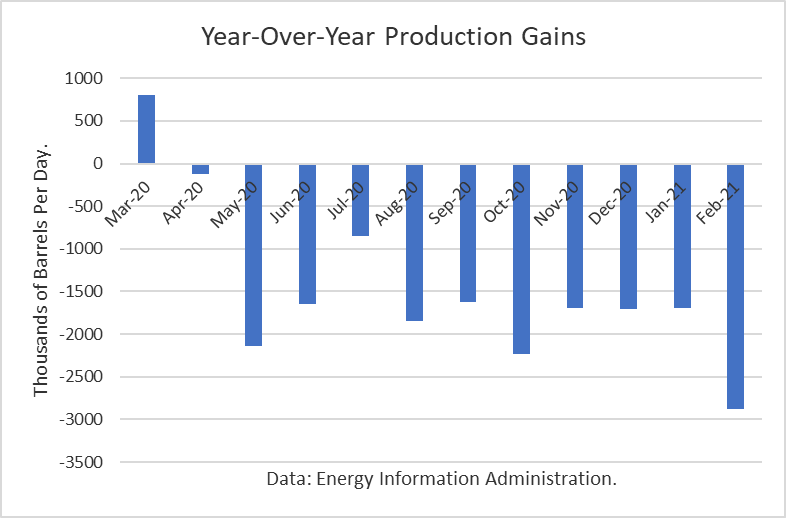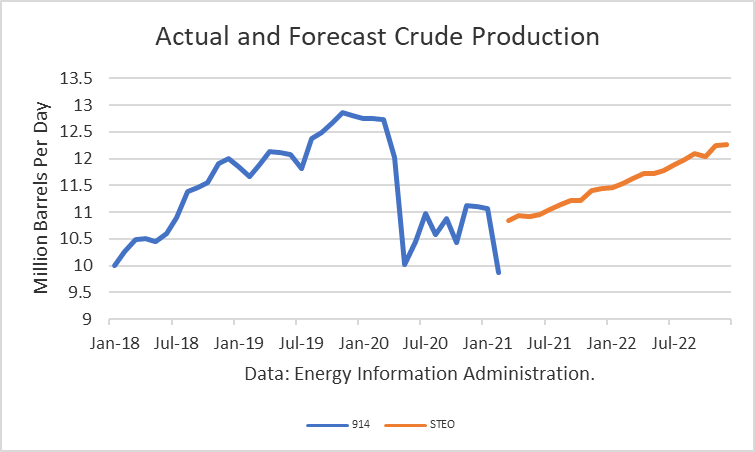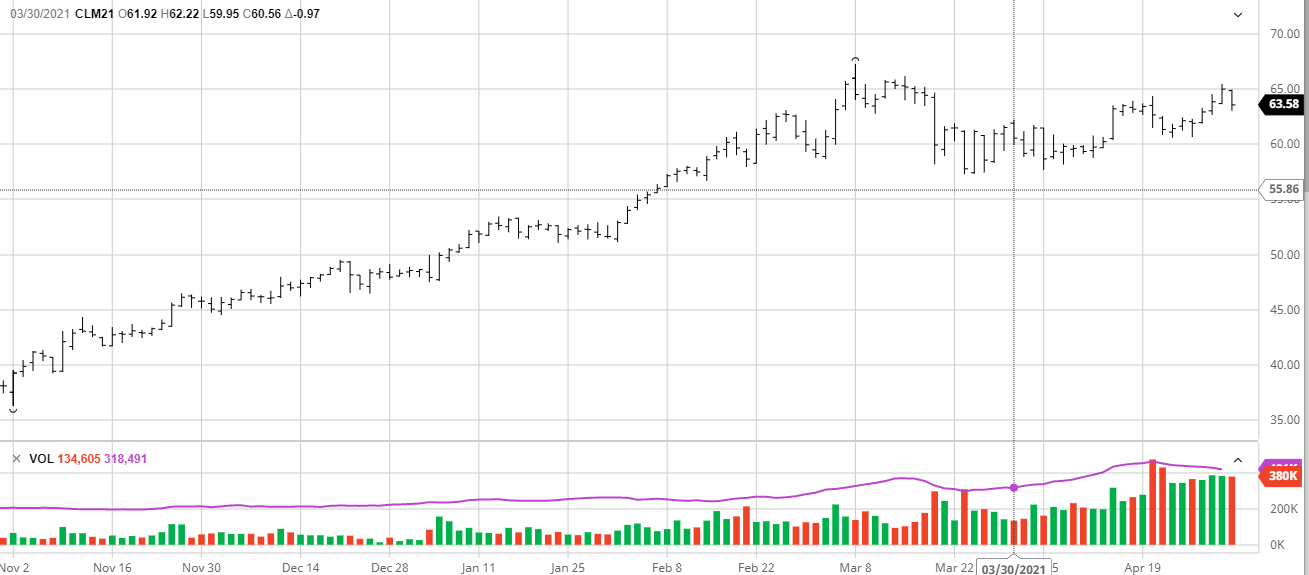The Energy Information Administration reported that February crude oil production fell by 1.197 million barrels per day, averaging 9.862 mmbd. This follows a dip of 42,000 b/d in January. The freeze in Texas accounted for the majority of the downturn. The February 914 figure compares to the EIA’s weekly estimates (interpolated) of 10.368 mmbd, a figure that was 506,000 higher than the actual 914 monthly estimate.

Drops in production were experienced in Texas (836,000), New Mexico (105,000), Oklahoma (98,000), North Dakota (82,000 b/d), and lesser amounts in many states.
Given the huge reduction last May, production dropped by 2.884 mmb/d over the past 12 months. This number only includes crude oil.

The EIA-914 Petroleum Supply Monthly (PSM) average figure was nearly identical to the weekly data average reported by EIA in the Weekly Petroleum Supply Report (WPSR).

The 914 figure was about 410,000 lower than the 10.280 mmbd estimate for that month in the April Short-Term Outlook. This difference is enough to trigger a “rebenchmarking” to EIA’s model in future production levels, but perhaps that will not take place because the drop was due to an unusual weather development and not a modeling issue.
Get Our Stock of the Week
Uncover the most undervalued and unappreciated stocks with our free, weekly newsletter. You'll get a new stock analysis every Tuesday!
The EIA is projecting that 2021 crude oil production will exit the year at 11.43 mmbd. And for 2022, it projects an exit at 12.27 mmbd.

Drilling rigs have been steadily rising, and the June WTI contract has rebounded to $63.58 /bbl.

Conclusions
The unprecedented crude oil price collapse of 2020 has been totally erased, and U.S. crude production has responded to some extent. It appears that EIA projections for low growth in 2021 and 2022 may be too pessimistic.
Check back to see my next post!
Best,
Robert Boslego
INO.com Contributor - Energies
Disclosure: This contributor does not own any stocks mentioned in this article. This article is the opinion of the contributor themselves. The above is a matter of opinion provided for general information purposes only and is not intended as investment advice. This contributor is not receiving compensation (other than from INO.com) for their opinion.
